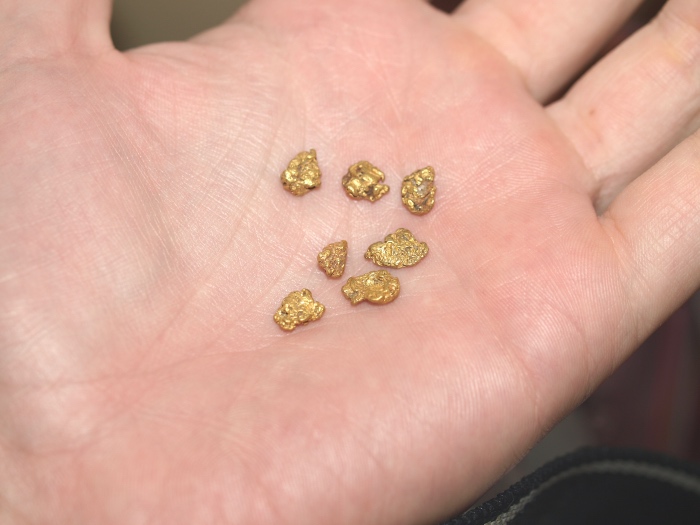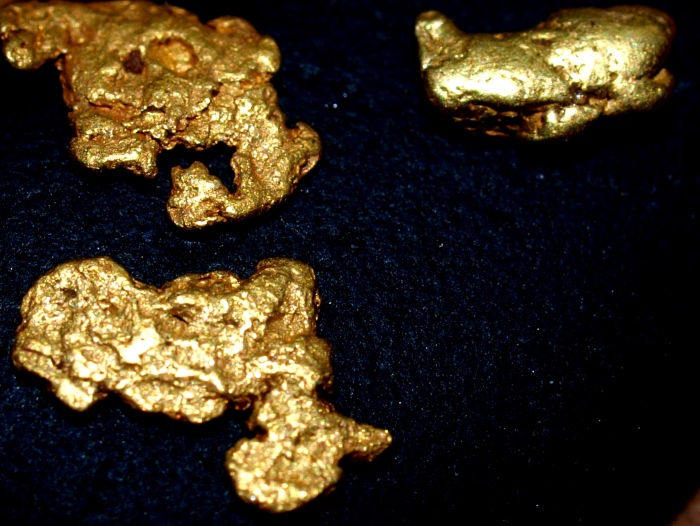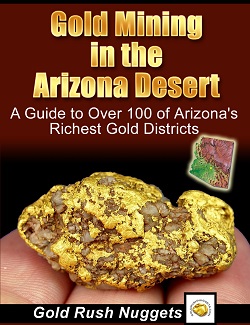
Arizona may be known as the Copper State, but those in search of gold should not overlook its potential. Arizona has had a long mineral history with rich records of gold production. Today, we focus on the best areas to prospect for gold near the state’s capital, Phoenix.
I expect that anyone who lives in Phoenix is looking for a good excuse to get out of the city now and then. Gold prospecting is a great outdoor activity, and the desert of central Arizona has a surprising amount of the yellow metal still left to find.
Maricopa & Yavapai County Historic Gold Production
Phoenix can be found in Maricopa County which ranks as the 5th highest gold-producing county in Arizona, with almost 500,000 ounces of gold produced up through 1959. For those who need a bit more convincing of the mineral potential of this area, Yavapai County adjacent to Maricopa is actually the highest gold producer in all of Arizona!
And nearby there was almost 3 million ounces of lode gold from 1900 to 1959, and 73,000 ounces of placer gold from Yavapai County. In Maricopa County, much of the gold-producing area are on its northern end of the county.
Wickenburg Gold
One of the best places to look for placer gold is on the southern side of the Wickenburg Mountains, near the Hassayampa River. There is a local legend that anyone who drinks from the river will no longer be able to tell the truth—perhaps this was to keep the details of its golden bounty secret! The best placers can be found near Morristown, around San Domingo Wash and Little San Domingo Wash, which drain towards the Wickenburg area.
The Wickenburg area is also great place for prospecting. It takes its name from Henry Wickenburg who founded of the Vulture Mine in 1863. The Vulture Mine went onto become Arizona’s most productive gold mine, producing roughly 340,000 ounces of gold and 260,000 ounces of silver over around 80 years.
For those looking to visit, Wickenburg holds the Annual Gold Rush Days Festival on a weekend in February. This is the perfect way to learn about the mining history of the town, which survived years of hardship but still lives on.
Wickenburg also offers guided tours and prospecting classes for first-timers in the area. Because of the arid nature of this area, gold prospectors typically make use of metal detectors to hunt gold nuggets in the desert washes here.

River Placers
Now we head southeast of Phoenix to Gila River, a tributary of the Colorado River that runs about 650 miles long. Just like Colorado River, Gila has also had numerous gold finds over the years. Placers are known to be found from the junction of the San Francisco River southwest to Bonita and Spring Creeks. One can access these areas by passing through dirt roads that run parallel to the river’s northern bank.
Placers and gold flakes can also be found in the gravels toward the mouth of Spring Creek in Graham County, as well as between Eagle Creek and Bonita Creek. River gravels on terraces along the curved course of the river are also known to carry placer gold.
Also Read: Safety While Prospecting in the Backcountry
Remote Prospects in the Maricopa County Desert
Other areas to find gold in Maricopa County for those up for a bit of a hike are Big Horn, Saddle Mountain and Pikes Peak. The Big Horn Mountains are located roughly 55 miles west of Phoenix. Gold, silver and copper are present in veins in metamorphic and plutonic igneous rocks in this area.
In particular, the mines located about 15 miles south of Aguila are gold-producing, and the drainages nearby are known to have some accumulated gold deposits. Saddle Mountain, on the other hand, is located southwest of the Gila River. This area is also known to have precious stones like fire agate. Pikes Peak is on the north of Maricopa County, and while known more for the phosphorous deposits in the area, has also had some gold discoveries through the years.
Also Read: Gold Mining in Arizona’s Sonoran Desert

Goldfield, AZ
For those wanting to experience a true-blue mining boomtown, take a trip just 40 minutes to the east of Phoenix. There lies Goldfield, located on a small hill smack in the middle of the Goldfield and Superstition Mountains. Goldfield was a former mining town that sprang to life in 1892 after gold discoveries were made on the western slope of the Superstition Mountains.
It was once home to the Mammoth Mine, which had a reported value of $170,000 in gold. After flooding of the mine in 1917 and a series of fires in the town, Goldfield began to decline. Today, a single mine called the Old Wasp Mine continues to operate in Goldfield. The rest of the area serves as a tourist destination for those who wish to see what life was like back in its mining heyday.
Lots of Places to Find Gold near Phoenix
With a population of several million people, most would not consider Phoenix to be the place for a gold prospector. Yes, it certainly takes some time to get out of the city. But once you’ve escaped the pavement and made it out onto the open road, you can get to many gold-bearing areas within just an hour or less from the city.
For the person who is simply interested in exploring the more “touristy” areas related to mining, you can visit places like Goldfield and Wickenburg to experience a taste of the old Arizona. For the hardcore prospectors who actually want to get out and explore the desert in search of gold… you are in luck too!
It’s always worth mentioning that the old-timers DID NOT FIND IT ALL. Any of the areas that were historically mined will still produce gold today. It may not be easy, but nothing worth doing is easy!
Next: Metal Detecting for Gold Nuggets in Arizona
Also Read: What is the Best Metal Detector for Finding Gold Nuggets?

